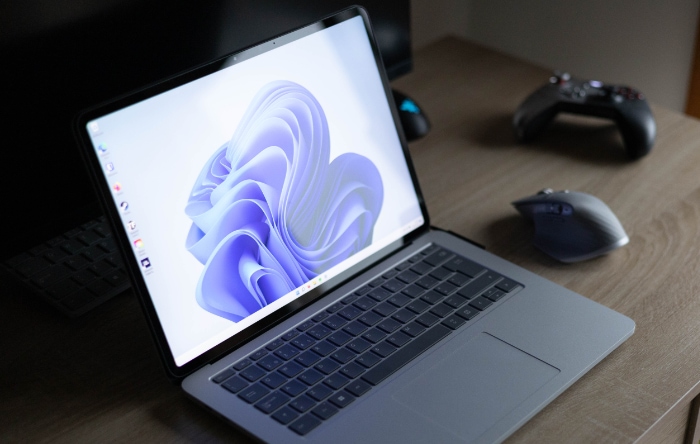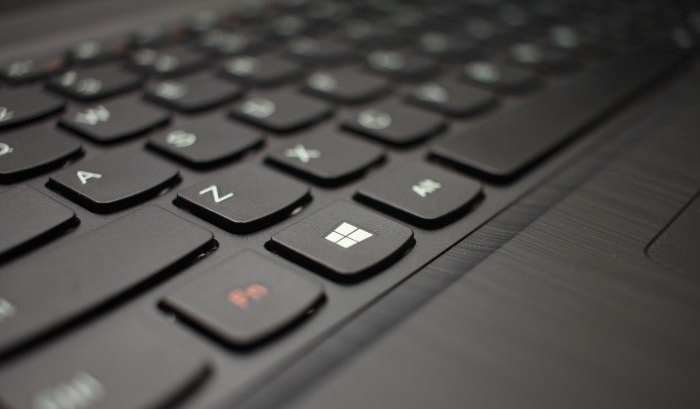How to Fix “Your PC Device Needs to Be Repaired”

Encountering the “Your PC Device Needs to Be Repaired” error on a Windows computer can be a daunting experience for many users. This error typically appears during the boot-up process, signifying issues that prevent the operating system from loading correctly.
Addressing this error is crucial, not only for regaining access to your computer but also for safeguarding important data and ensuring the longevity of your device.
Common Causes of the “Your PC Device Needs to Be Repaired” Error
Windows users might encounter the “Your PC Device Needs to Be Repaired” message for various reasons. This section outlines the most common causes, providing insights into the nature of the issue and how it affects your computer’s functionality.
Corrupt System Files
System files are the backbone of your operating system, ensuring smooth and efficient operation. Corruption in these files can occur due to malware attacks, abrupt shutdowns, or software conflicts.
When these files are damaged or missing, Windows struggles to load correctly, resulting in errors during boot-up. Tools like System File Checker (SFC) are designed to identify and repair corrupt system files, often resolving the issue.
Boot Sector or BCD Issues
The Boot Configuration Data (BCD) and boot sector are critical for starting Windows. They contain vital information that tells your computer how and where to load the operating system.
Problems arise when these components are misconfigured, damaged, or corrupted. This might be due to improper shutdowns, virus infections, or even manual errors in configuration.
Fixing BCD or boot sector issues typically involves using recovery tools to rebuild or repair these components.
Hardware Failures
Hardware components like your hard drive, RAM, or motherboard are fundamental to your computer’s operation. If any of these components fail or start to malfunction, it can prevent Windows from starting properly.
Signs of hardware failure might include unusual noises from the hard drive, the Blue Screen of Death, or random reboots. Diagnosing hardware issues might require running diagnostic tests or physically inspecting the components.
Outdated or Faulty Drivers
Drivers are software components that allow the operating system to communicate with hardware devices. When these drivers are outdated, corrupted, or incompatible with your system, they can cause various issues, including the “Your PC Device Needs to Be Repaired” error.
Keeping drivers updated is crucial for the stability and performance of your system. In some cases, rolling back to a previous driver version or reinstalling drivers can resolve the issue.
Preliminary Checks
Before diving into more complex troubleshooting methods for the “Your PC Device Needs to Be Repaired” error, it is essential to perform some basic checks. These initial steps can often resolve the issue quickly or provide valuable clues for further diagnostics.
Ensuring Secure Hardware Connections
Loose or improperly connected hardware components can cause a variety of issues, including boot errors. Begin by checking all internal and external connections.
Ensure that your hard drive, RAM, and any expansion cards are securely seated in their respective slots. Also, inspect the cables connecting your PC to its power source and external devices. Loose connections can disrupt communication between the system and its hardware, leading to errors.
Checking for Recent Hardware or Software Changes
Recent changes to your system’s hardware or software configuration can sometimes trigger errors. Reflect on any recent modifications you’ve made to your computer.
This could include installing new hardware, updating drivers, adding new software, or performing system updates. If the error coincides with these changes, it might indicate an incompatibility issue or an installation error.
In such cases, reversing these changes or updating other related components could resolve the issue.
Assessing the Error Message Details for Specific Codes
The “Your PC Device Needs to Be Repaired” message often comes with specific error codes or details. These codes can provide valuable information about the nature of the problem.
Take note of any alphanumeric code or descriptive text that accompanies the error message. Researching these codes online or consulting Windows documentation can offer targeted solutions and insights.
Understanding these error details can significantly streamline the troubleshooting process, directing you towards the most appropriate and effective solutions.
Basic Troubleshooting Methods

When faced with the “Your PC Device Needs to Be Repaired” error, starting with basic troubleshooting methods can often provide a quick fix. These initial steps are designed to be user-friendly and do not require extensive technical knowledge.
They can help in identifying or even resolving the issue without delving into more complex solutions.
Restarting Your Computer
Sometimes, the simplest solution can be the most effective. Restarting your computer can clear temporary glitches that might be causing the error.
This step allows the system to reset its state and can resolve issues arising from minor software conflicts or temporary data corruption.
Accessing Advanced Startup Options
If a simple restart doesn’t fix the issue, the next step is to access the Advanced Startup Options. This can be done by continuously pressing the F8 key (or Shift + F8 in some systems) as your computer starts.
This action leads to a menu with various troubleshooting options. From here, you can choose to start Windows in Safe Mode, which loads the OS with a minimal set of drivers and services.
If the error does not appear in Safe Mode, it’s likely that a more recent software or driver installation is the cause.
Running the Windows Troubleshooter
Windows includes built-in troubleshooters designed to diagnose and resolve various system issues. To access the troubleshooter, go to the Settings panel, and then to the Update & Security section.
Under the Troubleshoot tab, you’ll find options for running different troubleshooters, including those for the Blue Screen, Windows Update, and others. Running these can help to automatically fix issues related to system errors and other common computer problems.
Advanced Solutions
When basic troubleshooting methods do not resolve the “Your PC Device Needs to Be Repaired” error, it’s time to explore advanced solutions. These steps require a higher level of technical proficiency and often involve system recovery options and command-line tools.
While more complex, these solutions can address deeper issues within the Windows operating system.
Using the Windows Recovery Environment (WinRE)
The Windows Recovery Environment is a powerful tool for repairing common causes of boot problems. To access WinRE, restart your computer and repeatedly press F11 (or the designated key for your system) as it boots.
Once in WinRE, select ‘Troubleshoot’ and then ‘Advanced options.’
Running Startup Repair
Within the Advanced options, select ‘Startup Repair.’ This tool will attempt to diagnose and fix issues that prevent Windows from starting.
It’s particularly effective for resolving issues related to corrupted system files or faulty boot configurations.
Rebuilding the Boot Configuration Data (BCD)
If Startup Repair does not fix the issue, the next step is to rebuild the Boot Configuration Data. This requires using the Command Prompt from within WinRE.
Steps to Rebuild BCD Using Command Prompt
- In the Advanced options, select ‘Command Prompt.’
- Type bootrec /fixmbr and press Enter. This writes a Windows-compatible MBR to the system partition.
- Type bootrec /fixboot and press Enter to write a new boot sector.
- Finally, type bootrec /rebuildbcd and press Enter. This step scans for Windows installations not reflected in the BCD and lets you choose which to add.
Verifying the Integrity of the BCD
After rebuilding the BCD, it’s important to verify its integrity. If the system still doesn’t boot properly, additional commands in the Command Prompt might be necessary to repair or recreate the BCD file.
Checking Disk for Errors
Running the CHKDSK command is an effective way to check the integrity of your file system and fix logical file system errors, bad sectors, and file system metadata.
Running CHKDSK Command
- Access Command Prompt from WinRE.
- Type chkdsk /f /r X: (replace X with the letter of your Windows installation drive) and press Enter.
- The CHKDSK command will scan the drive for errors and automatically fix any that it finds.
Interpreting CHKDSK Results
After CHKDSK completes, review the results displayed on the screen. It provides details about the number of files processed, the amount of disk space reclaimed, and any repairs made to the file system.
System Restore and Reset Options
When advanced troubleshooting fails to resolve the “Your PC Device Needs to Be Repaired” error, System Restore and Reset become viable options. These methods can revert your system to a previous state or reset it to its original configuration, potentially resolving underlying issues.
Performing a System Restore
System Restore is a tool that rolls back system files, registry keys, installed programs, and other system settings to a previous state, known as a restore point. This can be particularly useful if the error coincides with recent software changes.
Accessing System Restore
To access System Restore, boot into the Windows Recovery Environment, navigate to ‘Troubleshoot,’ then ‘Advanced options,’ and finally, ‘System Restore.’ From here, you will be guided through selecting a restore point.
Selecting an Appropriate Restore Point
Choose a restore point created before the onset of the error. Ensure that the restore point dates back to a time when your system was functioning correctly.
Confirm your selection and proceed with the restoration process. The computer will restart, and the changes will be applied.
Resetting Your PC
If System Restore does not fix the issue, consider resetting your PC. This option reinstalls Windows either while preserving your personal files or removing everything.
Choosing Between “Keep My Files” and “Remove Everything”
- ‘Keep my files’ option reinstalls Windows but keeps your personal files and any applications that came with your PC while removing installed apps and settings.
- ‘Remove everything’ option removes all of your personal files, apps, and settings, and reinstalls Windows.
Steps for a Complete System Reset
- Access the Windows Recovery Environment.
- Go to ‘Troubleshoot’ and then ‘Reset this PC.’
- Choose between ‘Keep my files’ and ‘Remove everything.’
- Follow the on-screen instructions to complete the reset process.
Both System Restore and Reset are powerful tools that can resolve a range of issues. However, it’s important to back up important data before proceeding, as these methods can result in data loss, especially the ‘Remove everything’ option.
Conclusion
Encountering the “Your PC Device Needs to Be Repaired” error message can disrupt your workflow and create a barrier to accessing important information on your Windows computer. This guide has laid out a structured approach to tackle the issue, from conducting preliminary checks to diving into advanced troubleshooting methods, and considering system restore and reset options.
By methodically following the steps provided, users can effectively address the root causes of the error. Regular maintenance and keeping the system updated are crucial habits that reduce the risk of such errors.
If these solutions prove unsuccessful, it might indicate a more serious hardware issue, at which point professional advice is recommended. Remember, while encountering such errors can be stressful, the tools and methods to rectify them are readily available, ensuring you can return to a smoothly functioning system with minimal downtime.



